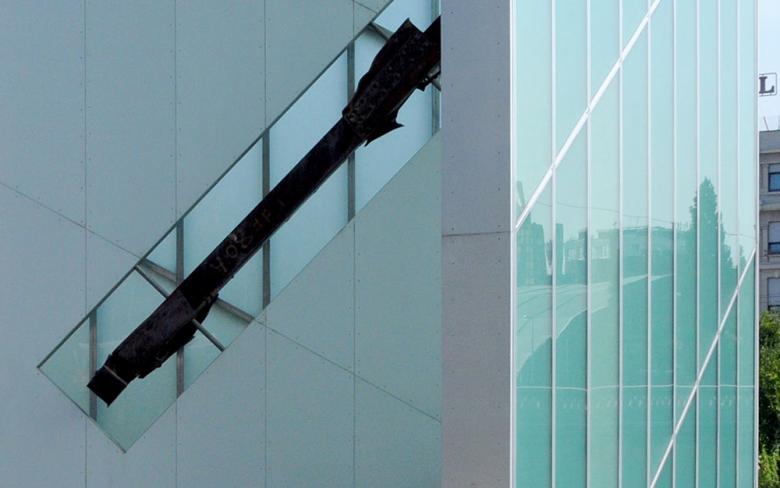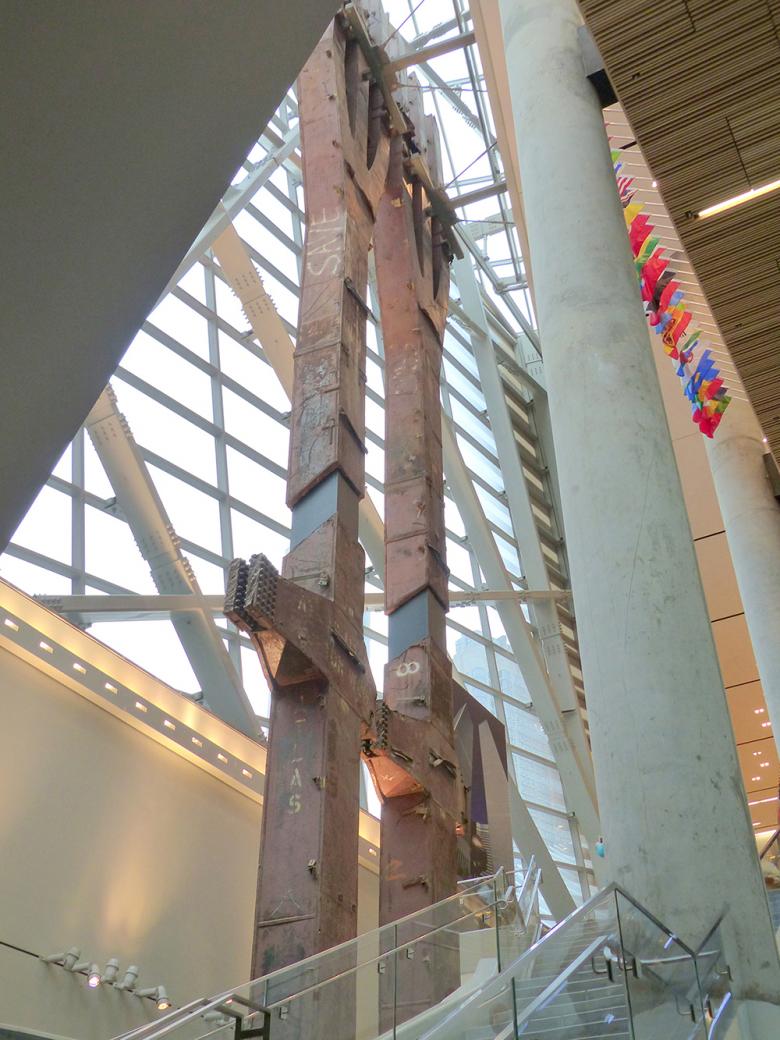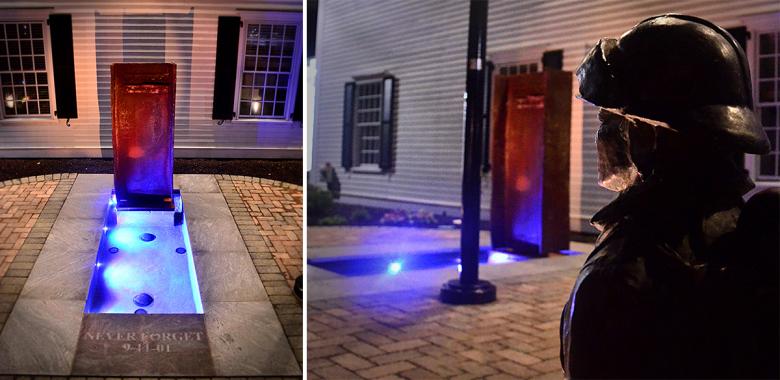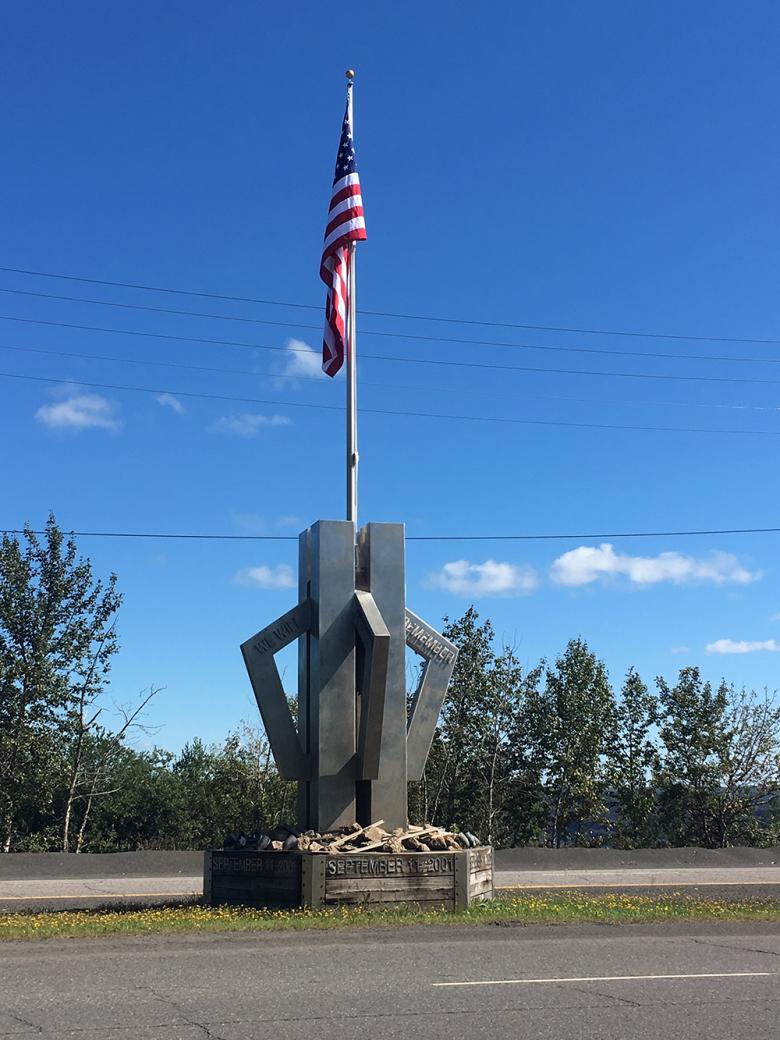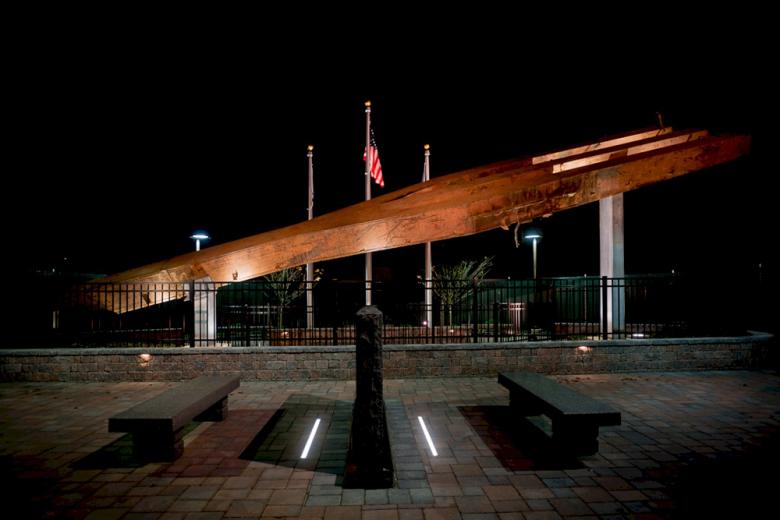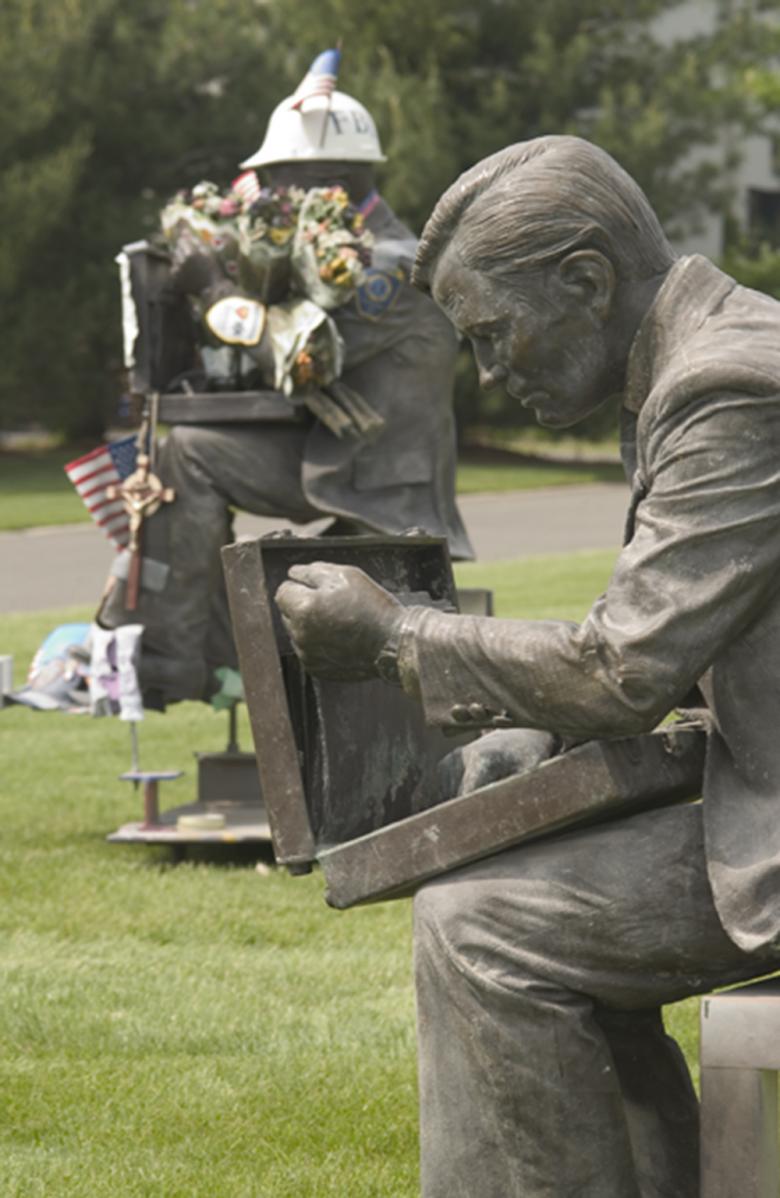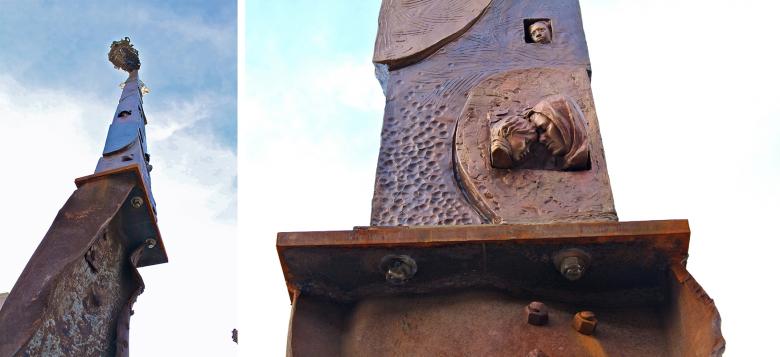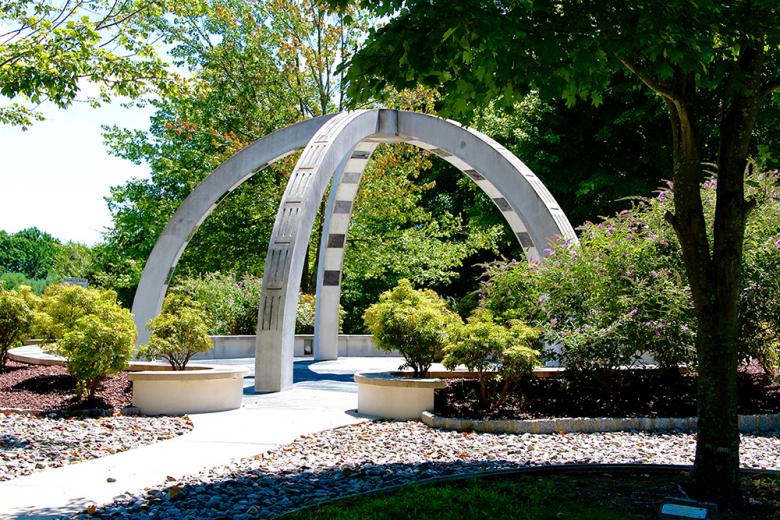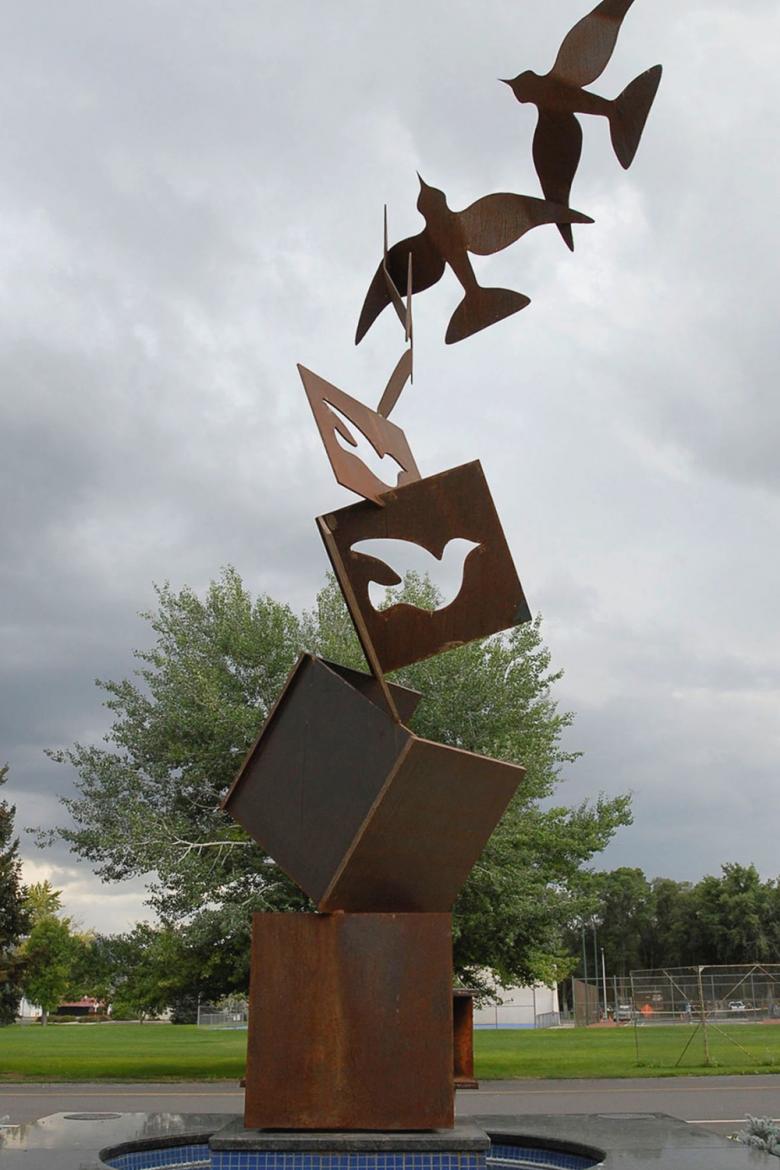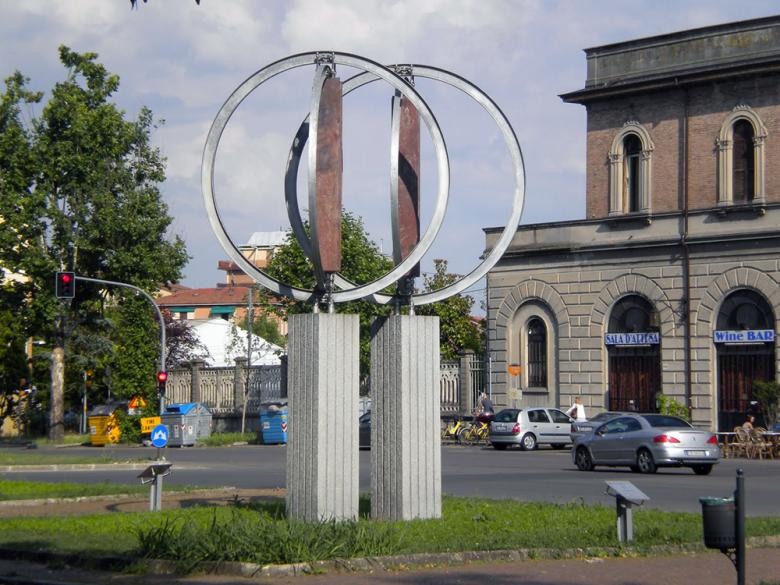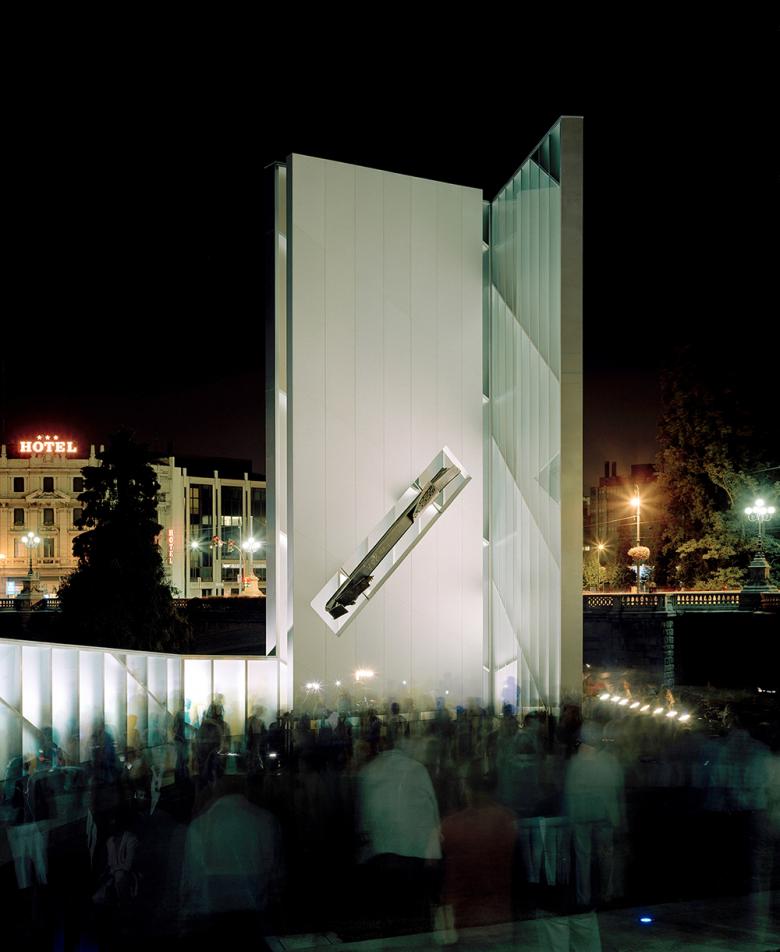Memorializing 9/11 with ‘WTC Steel’
Lester Levine
8. settembre 2017
Daniel Libeskind's Memoria e Luce in Padua, Italy (Photo: US Army Africa/Wikimedia Commons)
Monday marks the 16th anniversary of the 9/11 terrorist attacks. For Lester Levine, author of a book on the 2003 World Trade Center Memorial Design Competition, this anniversary comes at a time when all of the steel from the Twin Towers has been distributed around the world for use in 9/11 memorials. He highlights some of them, ranging from a modest memorial at fire station to a starchitect-designed memorial in Italy.
Five years of reviewing and researching the 5,201 entries to the 2003 World Trade Center Memorial Design Competition resulted in my 2016 book 9/11 Memorial Visions (McFarland, 2016). Soon after, I was amazed to learn just how many 9/11 memorials have been built outside of New York City: 1,500 worldwide.
Why so many? There was a tremendous amount of twisted steel wreckage removed from "Ground Zero," but rather than recycle it, officials decided to share this "WTC Steel" with the world for memorial purposes, piece by piece—the last piece only in 2016.
The most recognizable pieces of WTC steel are the "tridents" which formed the exterior façade of the Twin Towers. But few survived intact. This one is part of the National September 11 Memorial & Museum at the World Trade Center site:
National September 11 Memorial & Museum (Photo: Lester Levine)
The vast majority of these memorials are similar, a combination of steel members with a garden, a rock, a pool, the American flag, representations of the twin towers, statues of first responders and the like. Most are in the Northeast United States, at or near fire stations, such as this one in Woodbridge, Connecticut:
Fire Station Memorials
The vast majority of these memorials are similar, a combination of steel members with a garden, a rock, a pool, the US flag, representations of the twin towers, statues of first responders and the like. Most are in the Northeast United States, at or near fire stations, such as this one in Woodbridge, Connecticut:
Memorial in Woodbridge, CT, by Mary Maloney Baccar (Photo: Silver/Petrucelli & Associates)
The design is by architect Mary Maloney Baccar who wrote of it: "The pool reflects both this visibly damaged beam as well as the image of the viewer, leaving the viewer to contemplate the impact of this day on their own life."
After seeing images of hundreds of fire station memorials like these, one wonders whether the heroic efforts of 9/11 somehow released a pent-up need to publically honor the police and fire fighters who risk their lives every day across America.
Steel Memorials about Steel
WTC Steel also figures in memorials more closely related to the material’s structural function, such as this memorial created by employees of the U.S. Steel Minntac mine near Mountain Iron, Minnesota:
U.S. Steel Minntac memorial (Photo: United States Steel Corporation)
The wood base is five-sided to represent the Pentagon, another target on 9/11, while the "debris" at the base of the memorial represents the results of the attacks. Two pieces of WTC Steel are included: one surrounded by the towers to anchor the memorial and the other serving as a pedestal to hold plaques commemorating the memorial.
Another memorial is located at the National Iron & Steel Heritage Museum in Coatesville, Pennsylvania. Dedicated in July 2013, it is a single piece, one of the highly recognizable trident shapes mentioned earlier.
Memorial at National Iron & Steel Heritage Museum (Photo: American Galvanizers Association)
The National Steel Museum describes their Steelwork’s Memorial: "Nicknamed ‘trees’ or ‘forks’, these formed the lower stories' backbone around the circumference of each Tower. A portion of these columns were the only structures left standing when the towers collapsed. … The steel for these trees was melted, rolled, and cut to shape here at the Coatesville steel mill …"
Steel Beams + Ideas: USA
The well-known sculptor J. Seward Johnson referenced the remains of his WTC sculpture of a businessman, Double Check, that was heavily damaged on 9/11, beside the beam in the memorial at Exchange Place, New Jersey.
After 9/11, the damaged sculpture became a makeshift memorial. Touched by this, Seward cast a copy and welded casts of tokens left there (flowers, candles, notes) to the sculpture. He used a gray patina to suggest the gray ash of 9/11. His piece, titled Makeshift Memorial, sits in Jersey City, facing the Financial District beside a WTC beam.
Makeshift Memorial by Seward Johnson (Photo: Kenny Ek © 2005, The Seward Johnson Atelier, Inc.)
This memorial in Oak Lawn, Illinois, a suburb of Chicago, combines WTC Steel topped with sculptures created by the artist Erik Blome:
Memorial in Oak Lawn, Illinois, by Erik Blome. (Photos: Sandra Bury)
Blome created two 14-foot-tall bronze spires, each with 30 separate areas for designs. One design shows hands holding. The artist writes: "9/11 is all about togetherness, it’s all about coming together. I think people held hands that day. People who didn’t know each other held hands that day. ... When you say first responders, we were all, in a sense, first responders that day."
Other designs, for example, show two hands reaching for each other, but not quite touching; a lone firefighter hat; a man covering his face with a cloth to convey the dust that swirled around Ground Zero.
The cover of 9/11 Memorial Visions featured this competition entry by Tiberiu Mosteanu with two large arching structures:
9/11 Memorial competition entry by Tiberiu Mosteanu (Image: Tiberiu Mosteanu)
Then ten years after 9/11 this memorial structure was built in a park in Howell, New Jersey, done by completely different designers who couldn’t have seen Tibi's entry:
Memorial in Howell, New Jersey (Photo: Howell Patch)
In it, arches are joined at the top of the structure to form a pentagon (a reference to the town’s five residents who were killed in the 9/11 attacks but also happening to recall the Pentagon in DC). The black stone foundation is etched with a drawing of the New York City skyline. Inside is a boulder from Shanksville, Pennsylvania, and a piece of WTC steel mounted on a pedestal.
In the below memorial in Elko, Nevada, by artists Joan Anderson and Jacques Errecart, doves rise up from a piece of WTC Steel. In addition to the birds, the design incorporates squares, which represent eternity, and circles, which represent unity.
Memorial by Joan Anderson and Jacques Errecart in Elko, NV (Photo: Elko Daily Free Press)
Steel Beams + Ideas: Europe
Pieces of WTC Steel are encircled in a memorial built by the local Lion’s Club in Modena, Italy:
Memorial in Modena, Italy (Photo: 2010 Rotary Group Study Exchange Italy)
The 9/11 Memorial Registry describes the memorial: "Depicting two interweaving globes, it represents the hope of a future of peace and harmony among different civilizations and cultures. … two globes that symbolize the two worlds, Occident and Orient … The two worlds are really close but separated, which should symbolize the difficult relationship with the Islamic world …"
This striking memorial—Memoria e Luce in Padua, Italy—was designed by architect Daniel Libeskind, author of the masterplan for rebuilding the World Trade Center site.
Daniel Libeskind's Memoria e Luce in Padua, Italy (Photo © Bitter Bredt)
Libeskind describes the memorial, which includes a twisted steel beam salvaged from the wreckage of the World Trade Center, as "an open and luminous book."
The Future
With more than fifteen years between 9/11 and the present, and with all of the WTC Steel distributed, perhaps the world now has all of its 9/11 memorials. Yet I wonder, as the partial remains of the Twin Towers are viewed, will some people think that 9/11 was more about the "death" of two steel buildings than the death of nearly 3,000 innocent people?
Lester Levine is a business consultant and lifelong architecture groupie whose passion led him to become a 9/11 memorial "expert." He and his wife lost friends in New York and to heal entered the 2003 World Trade Center Memorial Design Competition. A quirk of fate nearly 10 years later led him to be the only person to read all 5,201 entries. His exploration of the new ideas found there became a book, 9/11 Memorial Visons, published by McFarland in 2016.
Articoli relazionati
-
Spotlight on Italy
on 16/05/18
-
Bologna Shoah Memorial
on 20/07/15
